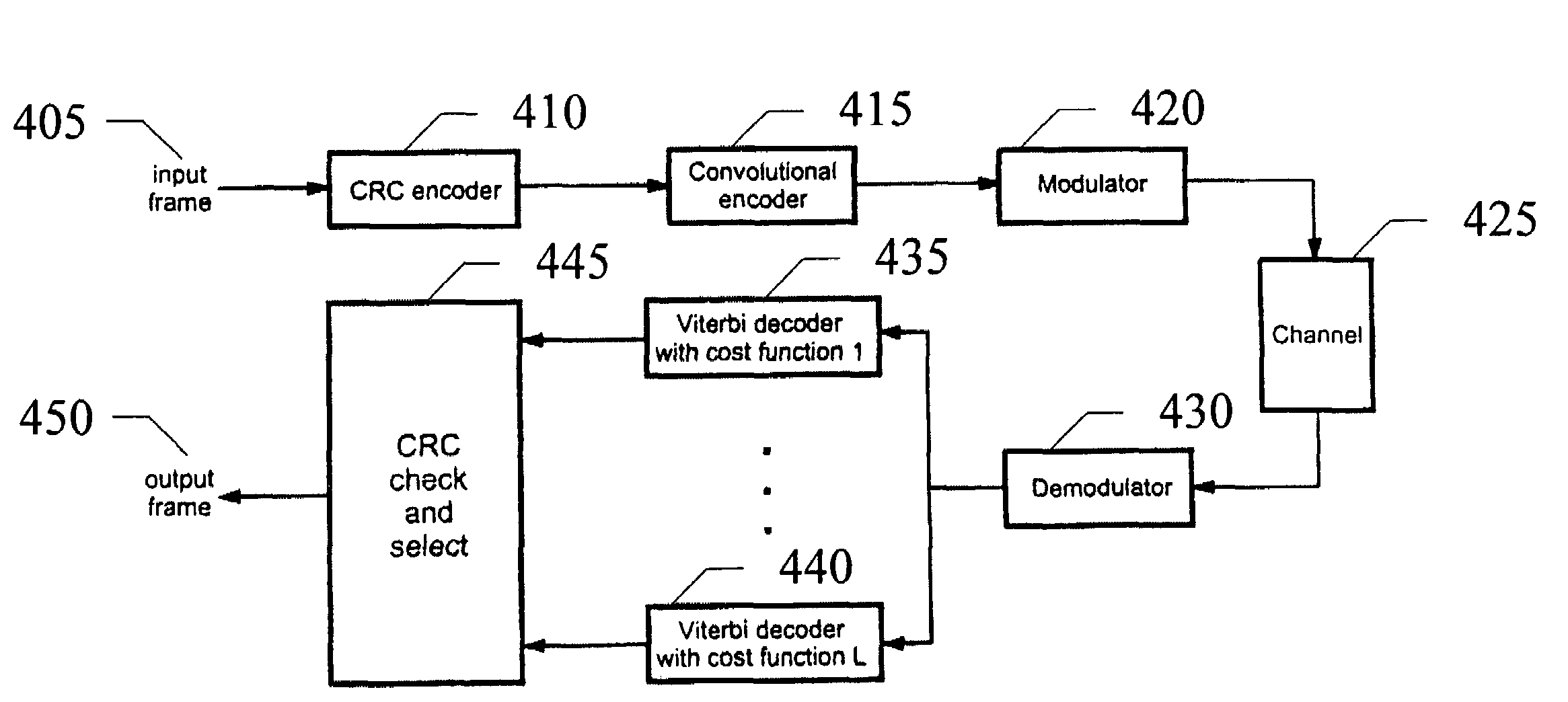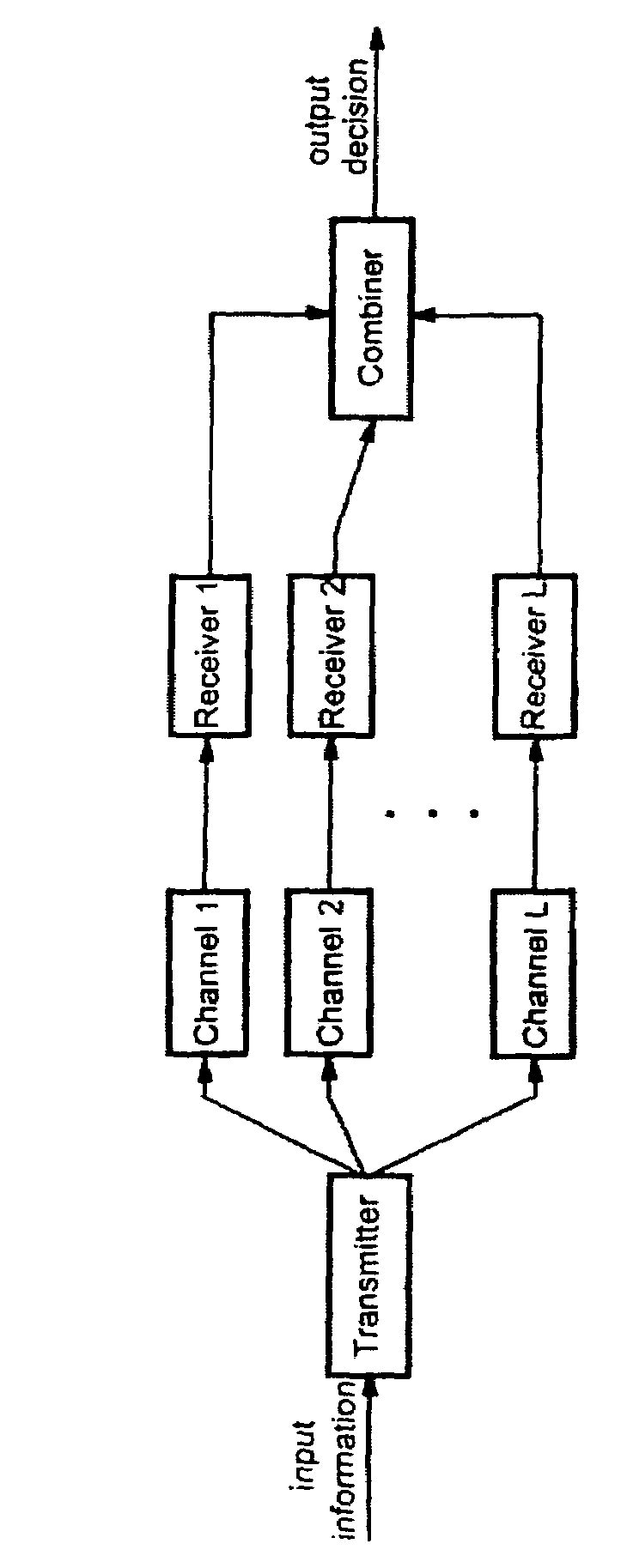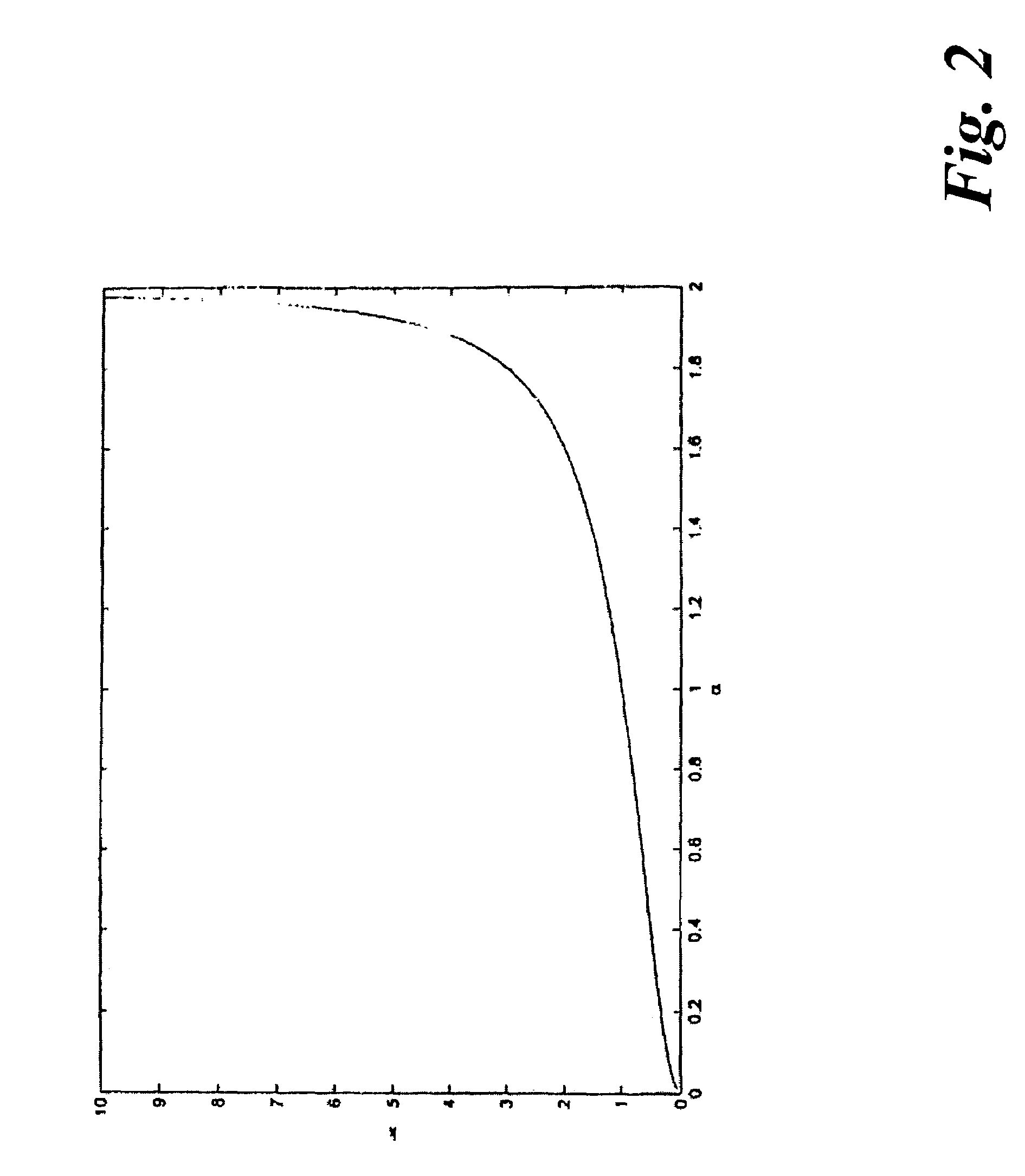Systems and methods for correcting errors in a received frame
- Summary
- Abstract
- Description
- Claims
- Application Information
AI Technical Summary
Benefits of technology
Problems solved by technology
Method used
Image
Examples
Embodiment Construction
[0021]Referring now to the drawings, in which like numerals refer to like techniques throughout the several views, exemplary embodiments of the present invention are shown.
[0022]The techniques of the present invention were developed after realizing that the conditions needed to validate the central limit theorem are not satisfied if the variance of “small and independent effects” is allowed to be unbounded (from a conceptual perspective, an infinite variance describes a highly dispersed or impulsive random variable). Without a finite variance constraint, a converging sum of normalized random variables can be proven to belong to a wider class of random variables known as “α-stable”. Thus, similar to Gaussian processes, α-stable processes can appear in practice as the result of physical principles. Furthermore, all non-Gaussian Ix-stable processes are heavy-tailed processes with infinite variance, explaining the often found impulsive nature of practical signals.
[0023]“Symmetric”α-stab...
PUM
 Login to View More
Login to View More Abstract
Description
Claims
Application Information
 Login to View More
Login to View More - R&D
- Intellectual Property
- Life Sciences
- Materials
- Tech Scout
- Unparalleled Data Quality
- Higher Quality Content
- 60% Fewer Hallucinations
Browse by: Latest US Patents, China's latest patents, Technical Efficacy Thesaurus, Application Domain, Technology Topic, Popular Technical Reports.
© 2025 PatSnap. All rights reserved.Legal|Privacy policy|Modern Slavery Act Transparency Statement|Sitemap|About US| Contact US: help@patsnap.com



